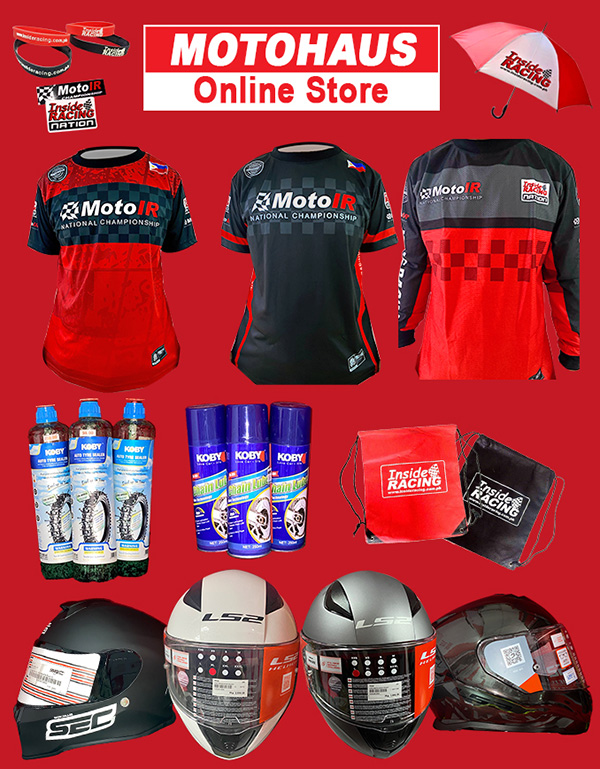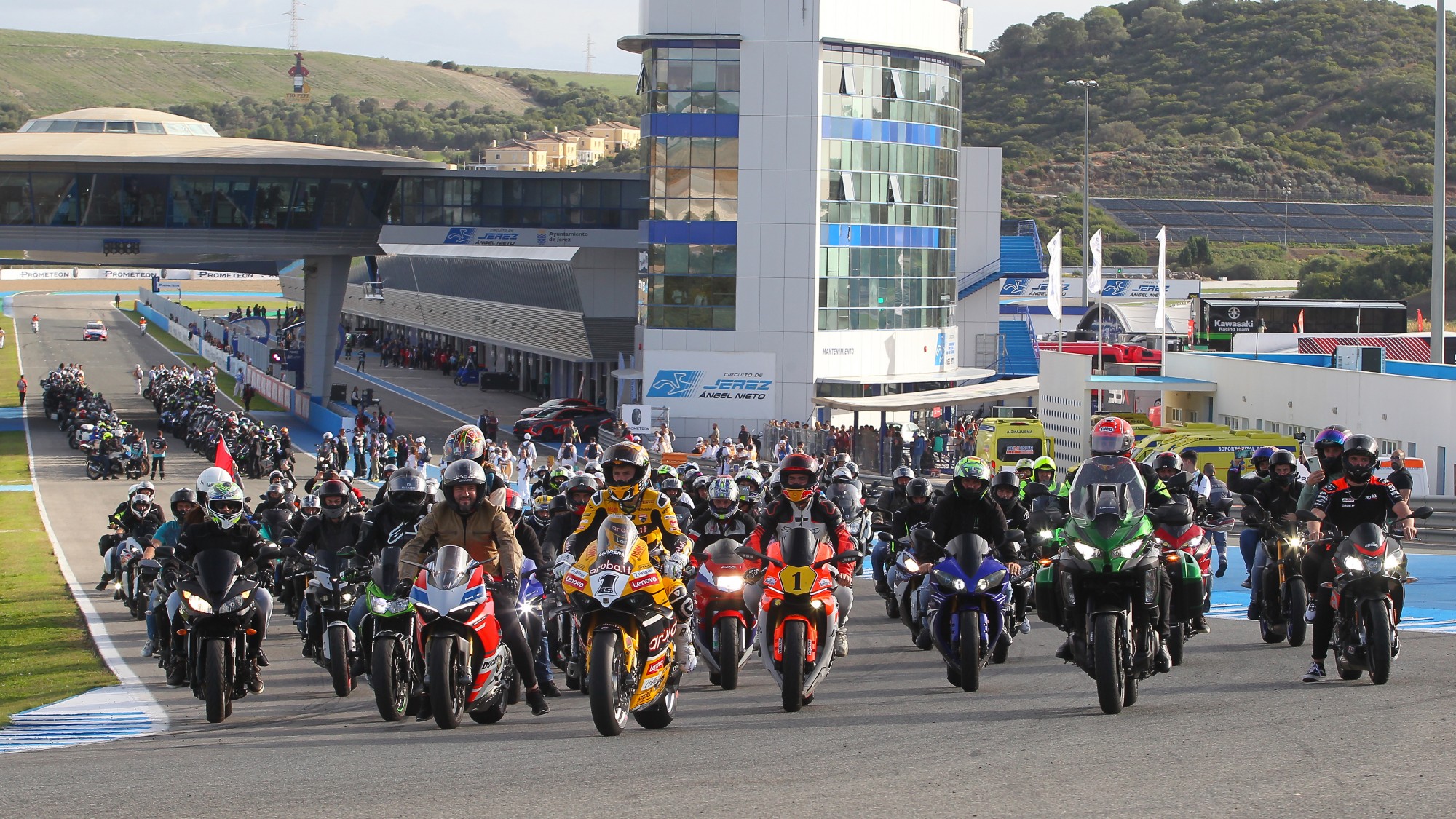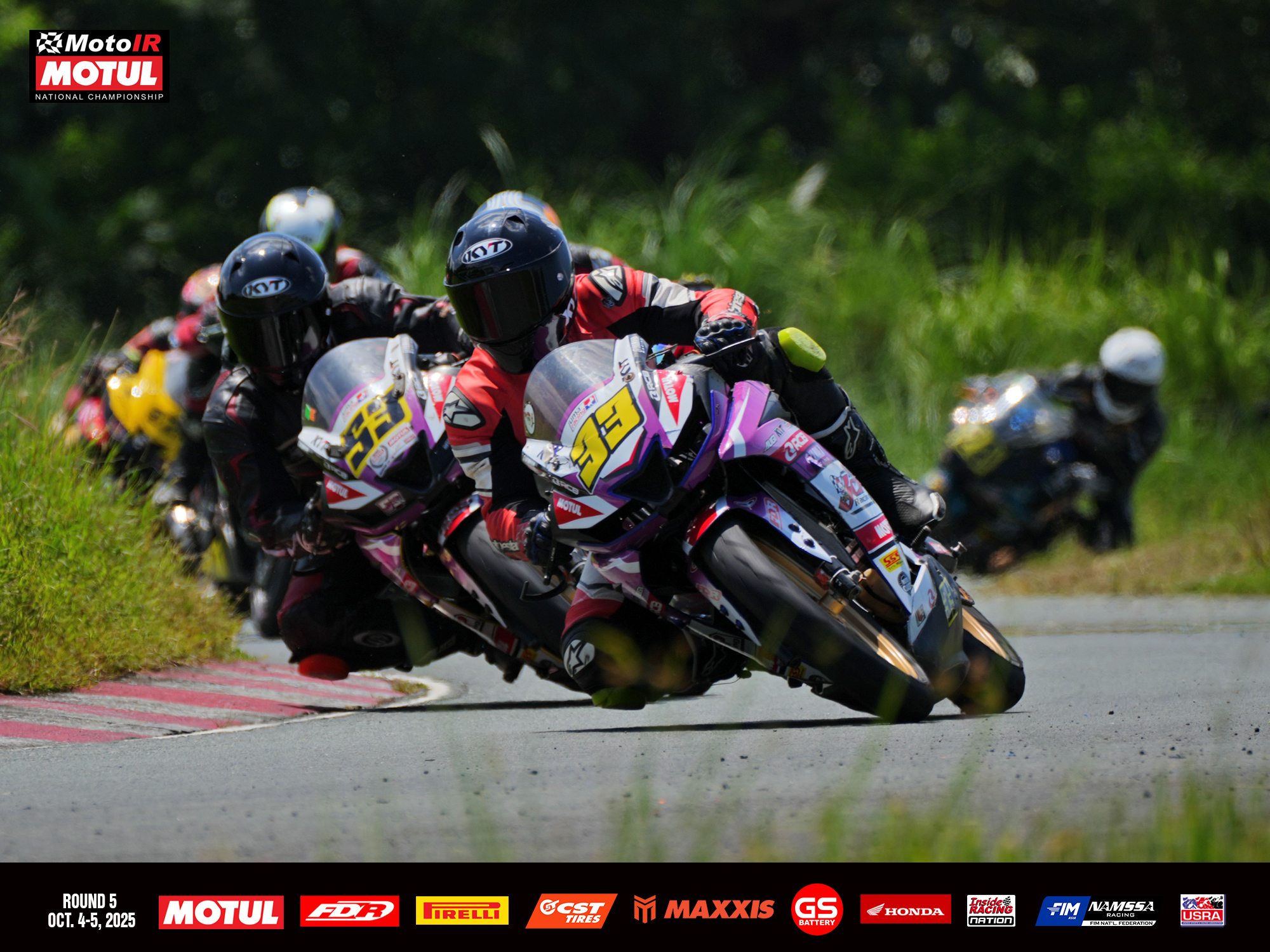2017 Yamaha Aerox First Ride Review: The next generation of Mio
Share this
It is not always that a particular bike has caused so much noise and reached the level of clamor that the Aerox has.
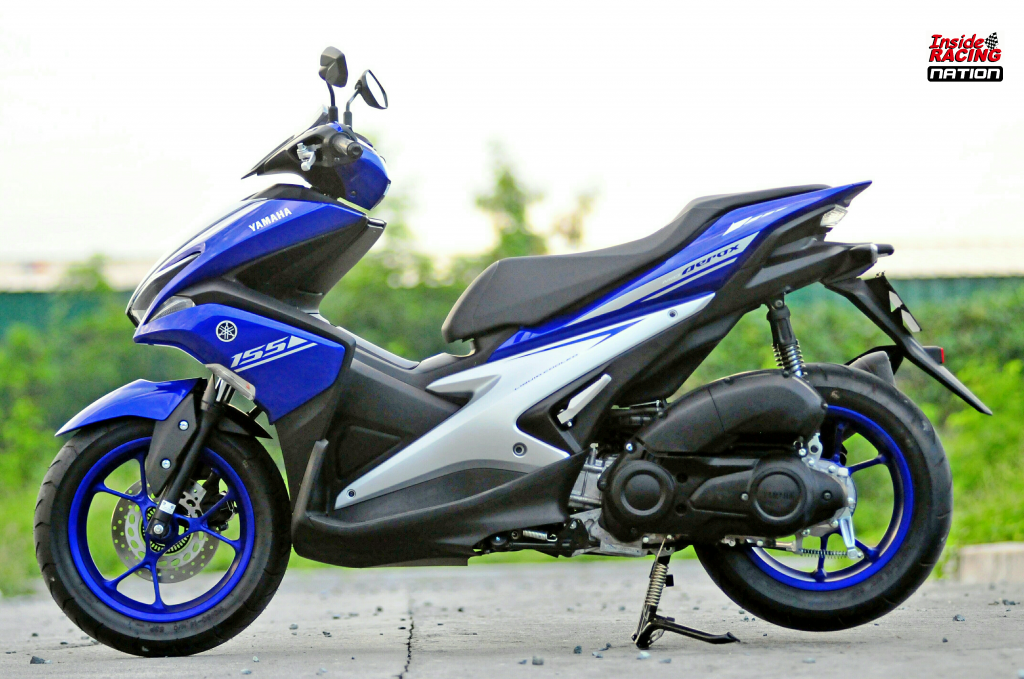
T here must be something with this bike that has generated so much attention online and has caused the initial batch to be sold out immediately. We got the unit all to ourselves in IR for over a week so we put it to the test to find out what all the hype is all about.
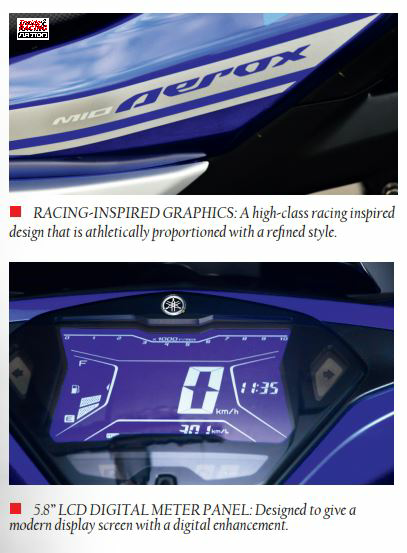
By far, the Yamaha Mio Aerox has the biggest engine among all the current and previous Mio models as it now carries a 155cc, single-cylinder, fuel-injected, variable valve actuation, liquid-cooled engine. The Aerox is only one of 2 kinds of Yamaha motorcycles that is equipped with liquid-cooled Blue Core engine. The 155cc displacement and the Blue Core power and efficiency are very evident with your first twist of the throttle. Blue Core is Yamaha’s signature engine technology that provides optimum combustion, improved cooling efficiency and reduces power loss giving you more power for less fuel. This one also has the Smart Motor Generator which is a Yamaha Ingenuity that silently starts your engine and also contributes lightness without the need for a starting motor.
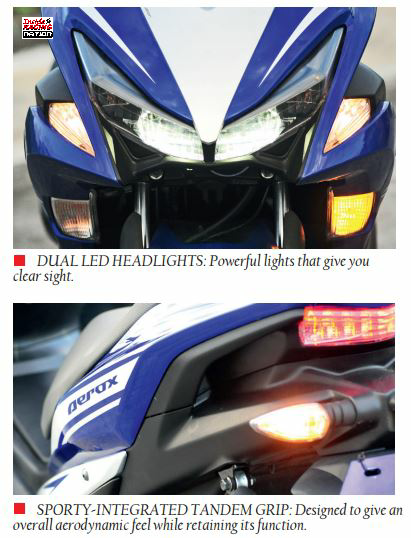
The VVA, meanwhile, lets the system adjust the fuel intake at a certain RPM, allowing strong torque at low speeds and power at high speed. The engine is run by a CVT automatic transmission and is combined with a 4.6-liter gas tank. For former (or current) Mio owners or if you are simply a scooter lover, this variant of the Mio will give you the first impression that it is indeed one strong scooter with its initial acceleration nowhere close to its 125cc or 115cc fuel-injected brothers.
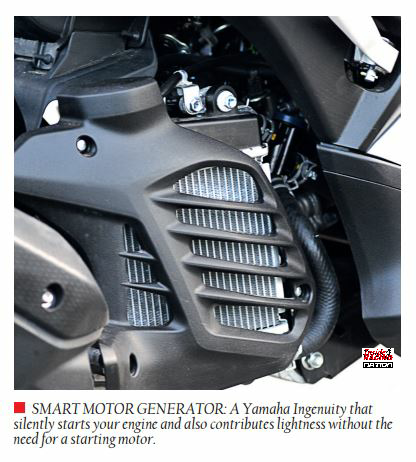
We did a speed test with this scoot on one Sunday afternoon and boy did it not disappoint. The long stretch of the C5 Road allowed us to hit speeds with the engine sounding as if it had a lot more to give. On long stretches, reaching 100 kph should be a breeze and going upwards of 130 kph is very much achievable with this sporty scooter.

Part of our requirements in praising a scooter is its low speed performance. One can simply speed up and check for the top speed but the dreaded EDSA traffic is another type of test, a real world test we should say. The Aerox did not give any hint of a dragging feel brought about by the CVT transmission as the engine revved smoothly as the bike moved forward or sideways at low speed in navigating the hell of the road that is EDSA, on rush hour. This is one solid machine indeed.
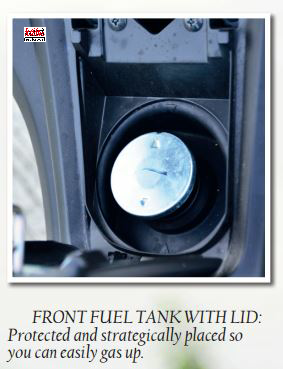
Aiding the bike’s stability and great handling are the super wide 110/80x14F and 140/70x14R tubeless IRC tires. Aside from the great handling, the bike also corners particularly well due to its sporty nature and riding position of the rider. These tires, we’ve learned, might actually not need any breaking in as they provided relatively good grip considering these are OEM tires on a low mileage scoot. These wide tires, coupled with the scooter’s sporty feel, inspire confidence when attacking corners, giving you a more worthwhile sporty riding experience. There might have been some comments about the rear drum brake of the Aerox online but in the real world, this is enough to stop the bike effectively when combined with the front disc brake. Of course it wouldn’t hurt if Yamaha would release an improved version with a couple of disc brakes and possibly the integration of an Antilock Braking System.
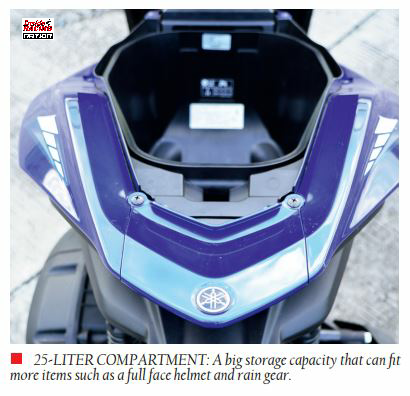
During nighttime riding, the dual LED headlights of the Aerox proved to be more than adequate for the Metro Manila roads, so no need to install aftermarket LED lights. These will also be more than enough when riding in highways where there are no lamp posts to light the road. It should be more than enough to give you proper illumination in the dark, paving the way for a much safer and enjoyable ride ahead. Complementing the dual LED headlights is the LED tail light that provides strong brightness and visibility. Yamaha made it easier for the riders to open the seat and fuel lid by having a couple of helpful buttons near the ignition switch. Speaking of the fuel lid, the gas tank cap is located in between the rider and the handlebar so you could easily gas up. The sport integrated tandem grip, meanwhile, is part of the bike’s aerodynamic design while retaining its basic function. This scoot is fast and its racing inspired decals give you the impression that you are really riding a crotch rocket, while at the same time complementing the bike’s overall sporty look and feel.
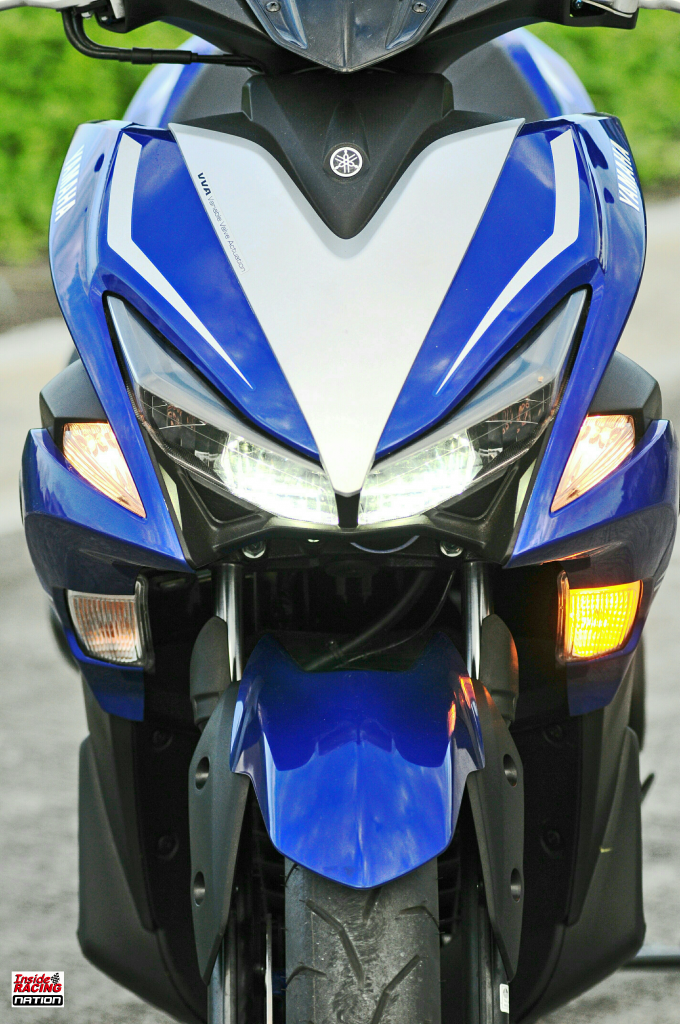
Well the wait is over, and it is finally here. The bike is well worth its listed price of 99,800 pesos. This variant of the Mio will give you the first impression that it is indeed one strong scooter with its initial acceleration nowhere close to its 125cc or 115cc fuel-injected brothers.
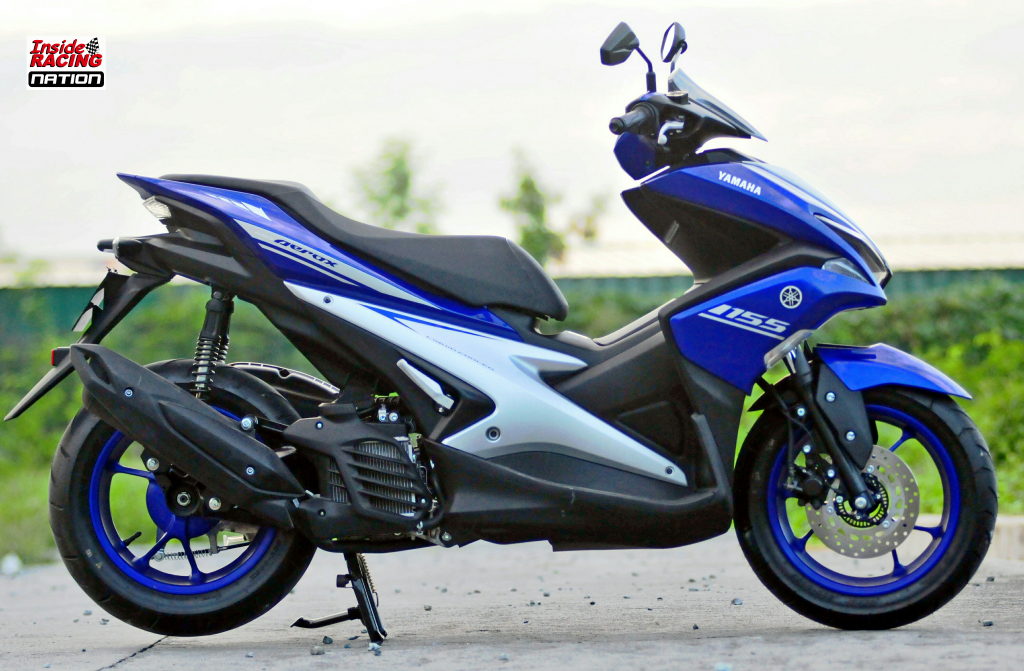
Ricci Abrina: This new talk of the country, Yamaha AEROX 155cc EFI is fun and lightweight to ride and maneuver. This mid-sized scooter packs a punch and a half. Although it sounds more silent than its older brother, the Yamaha NMAX 155, the Yamaha Aerox 155 I feel is the more “drag racer” in the acceleration department. The heralded Yamaha Aerox 155 is equipped with fat 14-inch wheels shod at front 110×80 and rear 140×70 – now that’s what you call grip. The colors available cry out racing/speed/ coolness with Race Blu, Vibrant Orange and Black Raven. Well guess what? Our test unit is the Race Blu – go figure, LOL! The LED gauge is beautiful at night but I had a hard time seeing the INFO midday. Hey! I love the push buttons to pop-up the seat compartment and the fuel cap as well. And there is this secret compartment where you can charge your cellphone and stuff – go look for it…LOL! The design is such that you would want to talk about it.

Philip Bonza: This is the most anticipated AT model from Yamaha this year (2017). From the Aerox in the late 90’s with 2-stroke engine, this Aerox has the same DNA in the style and design. This model has a distinctively handsome design with unusual appeal in style. It has great curves and lines that matched perfectly, giving an excellent look. The Blue Core technology engine runs fine on city rides and is strong in low speed acceleration and good in high speed and shifting to activate the VVA in higher rpm for better acceleration feel and performance in open roads. Full digital meter panel fits right in its style and modern appearance. Sexy curve on saddle and bulky yet slim tail end offer streamline at the sides and behind. The ergonomics, I can say, is in the sport style with its narrow handlebar and a bit forward bend body position. The brakes bite well but it is better if it has hydraulic disc brake on the rear too. The front suspensions are too soft for my riding style and the rear suspension are hard and looks tiny that it did not much the overall look and performance. For the porma, performance and price I give 3.5 gear points.
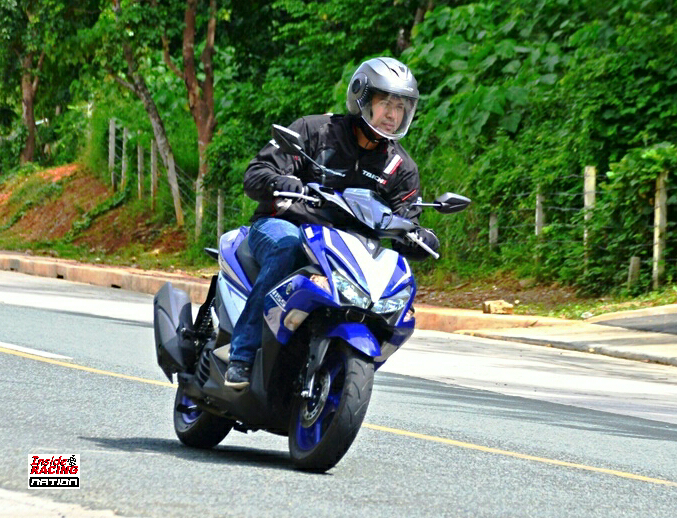
This was published in InsideRACING Magazine’s Volume 15 Number 9 2017 issue









